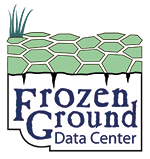
Permafrost of the Usa River Basin, Version 1
Data set id:
GGD614
DOI: 10.7265/rsjx-xc36
This is the most recent version of these data.
Overview
The map consists of ESRI Shapefiles of the Usa River basin, Russia, including Lek-Vorkuta and Bolshaya Rogovaya. There are four data layers in the data set: a base map layer, a permafrost layer, and two key (permafrost) areas. Each data layer comprises several sub-layers. The map is based on a UTM 41 projection with the WGS 1984 spheroid. Parameters include permafrost temperature and degree of continuity; permafrost temperature classes, lithology, and stratigraphy; thermokarst, pingos, mass ground ice, and topography, lakes, large rivers (in streams), rivers, and watershed boundary. Data are available via ftp.
Parameter(s):
GROUND ICEPERMAFROSTSOIL TEMPERATURE
Platform(s):
Not Specified
Sensor(s):
Not Specified
Data Format(s):
Not Specified
Temporal Coverage:
Not Specified
Temporal Resolution:
Not Specified
Spatial Resolution:
- Not Specified
Spatial Coverage:
N:
68
S:
65
E:
65
W:
56
Blue outlined yellow areas on the map below indicate the spatial coverage for this data set.